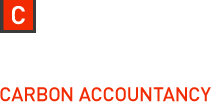Recent
Business Mondays - Carbon Accountancy's "Santa CEO" John Leyden
16 December 2020
London EC1A Community Project
16 July 2020
What Lies Ahead For Accountancy Firms Large & Small?
23 June 2020
How retailers and their suppliers can prepare for the coming year – Corona crash and Brexit combined
29 May 2020
Incubeta Ignite Virtual Learning Series - Carbon Accountancy 15% discount
4 May 2020
The Carbon Accountancy Guide to the Flat Rate VAT Scheme
1 April 2017
Disclaimer
When considering VAT it is important to understand the implications. This guide sets out the general rules applicable to VAT. It is not intended to be a substitute for proper professional advice from your accountant or tax advisor.
Flat Rate Scheme
The changes made on 01 April 2017 to the flat rate scheme make it significantly less attractive for businesses to use the scheme. Previously most companies made a profit from the scheme and now most of the companies will not make any profit by using this scheme.
Using standard VAT accounting, the VAT you pay to HM Revenue & Customs or claim back from them is the difference between the VAT you charge your customers and the VAT you pay on your purchases.
Using the Flat Rate Scheme you pay VAT as a fixed percentage of your VAT inclusive turnover. The actual percentage you use depends on your type of business you run.
You can join the Flat Rate Scheme for VAT and pay VAT on the flat rate percentage of your turnover if:
Your estimated VAT taxable turnover - excluding VAT - in the next year will be
£150,000 or less.
Your VAT taxable turnover is the total of everything that you sell during the year that is liable for VAT. It includes standard, reduced rate or zero rate sales or other supplies. It excludes the actual VAT that you charge, VAT exempt sales and sales of any capital assets.
Generally, you don't reclaim any of the VAT that you pay on purchases, although you may be able to claim back the VAT on capital assets worth more than £2,000.
Once you join the scheme you can stay in it until your total business income is more than £230,000.
Limited cost businesses
These changes took effect on 01 April 2017. You’re a limited cost business if the
amount you spend on relevant goods including VAT is either:
less than 2% of your VAT flat rate turnover
greater than 2% of your VAT flat rate turnover but less than £1000 per year
If you’re a limited cost business, you should use the flat rate of 16.5%. The goods must be used exclusively for the purpose of your business and certain goods are excluded from this list which can be found on the HMRC website.
For some businesses this 2% rule will not be clear, they may need to complete this test each time they complete their VAT return. This is because you can move from a limited cost rate of 16.5% in one period to your relevant sector rate in another.
If you’re a limited cost trader this means that you may pay more VAT than you do on standard accounting. You may want to check to make sure the Flat Rate Scheme is still best for you.
Potential benefits of the Flat Rate Scheme (not Limited cost businesses)
Using the Flat Rate Scheme you can save time and smooth your cash flow.
You don't have to record the VAT that you charge on every sale and purchase, as you do with standard VAT accounting. This can mean you spending less time on the books, and more time on your business. You do need to show VAT separately on your invoices, just as you do for normal VAT accounting.
If you are in your first year of VAT registration you get a one per cent. reduction in your flat rate percentage until the day before the first anniversary you became VAT registered.
You no longer have to work out what VAT on purchases you can and can't reclaim.
With less chance of mistakes, you have fewer worries about getting your VAT right.
You always know what percentage of your takings you will have to pay to HMRC.
If you liked our guide to the Flat Rate VAT Scheme then please view Carbon Accountancy services.
Written by Ahmad Waqas






